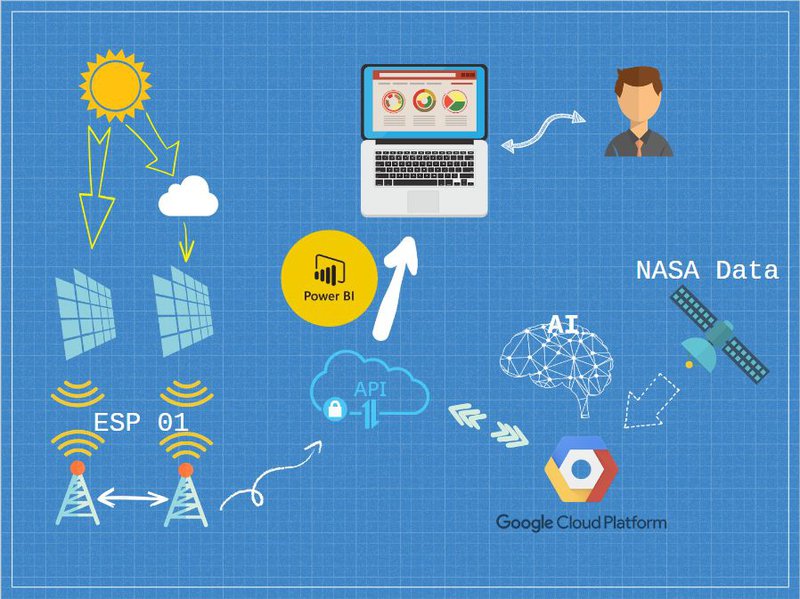SUN:200 | You are my Sunshine
Awards & Nominations
SUN:200 has received the following awards and nominations. Way to go!
The Challenge | You are my Sunshine
SUN:200
SUN:200 developed an interactive map for assessing solar energy output, using a network of autonomous sensors, that enhances and granulates NASA’s energy radiation data.

Summary
SUN:200 ensures universal access to affordable, reliable information about renewable energy. It is an interactive map that leverages data from multiple sources that helps planning energy production and consumption for all human necessities and other planned activities based on expected energy output from solar panels. Our solution is designed to facilitate decision making for people involved in the renewable energy industry, from both the public and the private sector, ranging from project managers and engineers to incentive program designers, technology developers, and researchers.
About us
We are a team of four, based in Bucharest, Romania. We’ve met during competitions around the country becoming friends over the time. We’ve learned to collaborate, and we’ve won over 20 hackathons in total.
How we’ve got the idea
Faced with the challenge of finding how much energy we could get from a solar panel, we’ve realised there is no tool able to provide unconditional access to local data. While we may appreciate the capacity of solar panels, many of us don’t understand how much energy a solar panel actually produces. We were discussing for a solution for some time now, and NASA Space Apps Challenge was the perfect environment for kick-starting our idea.
How does it work?
Simply enter the app, select your region, type of usage(energy or agriculture) and then configure the parameters asked. In the background, we’ve integrated data from our own local ground sensor network together with data from Orbiting Carbon Observatory 2 (OCO-2), NASA –funded Hawaii Space Exploration Analog and Simulation V (HI-SEAS V), and National Renewable Energy Laboratory (NREL). As a result, we are able to make reliable predictions, based on observed patterns, by granularising NASA data.
Further applications
Given the size and scalability, the network could be used for solar pattern identification, in order to offer better predictions not only for installing solar panels, but also to farmers who need to optimize their crops. Moreover, given the simplicity of the design, our sensors could be integrated into wearables that can notify the user when the solar radiation exceeds certain amounts. Thus the user becomes part of our grid of sensors, while benefitting from our real-time data.
Resources used
A detailed list of technologies could be seen below. We’ve built our hardware module around the ATtiny85 microcontroller. The system is powered by a solar panel, that also acts as one of our radiation sensors. Using the ADCs we aquire data from sensors, and stream it through ESP01 module over free wi-fi networks directly to Azure Cloud Platform.
Using Power BI and JavaScript we’ve created an interactive platform, where users can see real-time statistics, as well as data correlated with NASA measurements.
Technology list:
Hardware:
-ATiny85 microcontroller
-ESP01 - for wifi communication
-Solar cells for measuring sun radiation and powering the device
-Battery charger, and Li-Po batteries
-SMD components (resistors and capacitors)
-Hi Storage capacitors
-PCB design and schematics software
-In-house manufactured PCBs
Programming Languages:
-C, LuaScript – for embedded software development
- C# and ASP.net
- JavaScript
- HTML5
- CSS
- SQL
- AJAX - real-time data refreshing
Software, APIs and Cloud:
-Catia for 3D concept design
-Microsoft Azure web services
-Microsoft SQL Server Management Studio
-Custom APIs, uploaded to Azure
-Microsoft Power BI for data representation
- Google Cloud Platform
- EAGLE PCB Design Software
-Adobe Illustrator for graphic content
-Adobe After Effects for creating the showcase movies
SpaceApps is a NASA incubator innovation program.